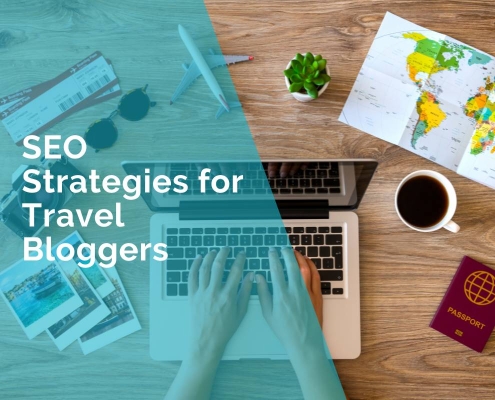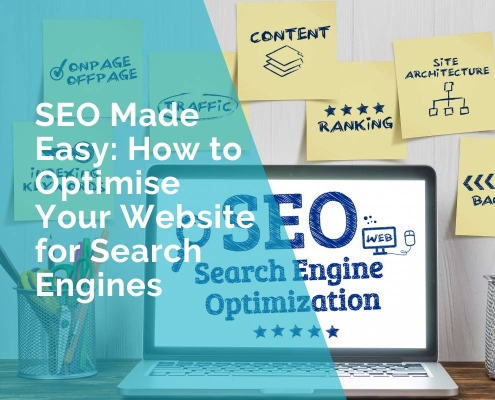How to Increase Website Traffic: A Comprehensive Guide for Small Business Owners
Increasing website traffic refers to the deliberate effort of attracting a larger and more relevant audience to your site through diverse and strategic channels. These include search engine optimization (SEO), content creation, social media engagement, email marketing, partnerships, paid advertising, and user behavior analysis. For small businesses, traffic is not just about vanity metrics—it’s about generating visibility, building trust, and converting attention into leads, customers, and revenue. In a digital economy with short attention spans and fierce competition, understanding how to drive consistent, high-quality traffic is critical to long-term growth and survival.
Whether you’re building your first digital presence or expanding a mature platform, understanding the mechanics of website traffic is essential. The strategies outlined in this guide go beyond surface-level advice — they are designed to equip small business owners with tactical steps, tested frameworks, and analytical tools for growing consistent, high-value traffic. Instead of relying on unpredictable trends or gut instinct, you’ll be able to make informed decisions grounded in best practices and real-world outcomes.
Why Website Traffic Matters
For small business owners, website traffic is more than just a number — it represents the pulse of your online presence and your ability to increase website traffic through deliberate strategy. Every visitor is a potential customer, brand advocate, or data point that can shape future decisions. Traffic reflects how well your business resonates with its target audience, and it plays a crucial role in driving momentum across your digital ecosystem. In essence, it’s how you:
- Generate leads and inquiries.
- Educate potential customers about your products or services
- Drive conversions and sales
- Establish credibility in your niche
Without traffic, your website is like a well-designed storefront with no foot traffic.
Types of Website Traffic
Understanding the types of website traffic is essential for building a well-rounded strategy and allocating your time, budget, and content efforts more effectively. Each traffic source represents a different user intent and level of engagement, which directly affects conversion potential, retention, and growth opportunities. By segmenting traffic into categories, small business owners can tailor campaigns, prioritize outreach, and uncover where to invest for the most significant impact:
- Organic Traffic: Visitors from unpaid search engine results.
- Direct Traffic: People who type your URL directly.
- Referral Traffic: Visitors from other websites linking to you.
- Social Traffic: Traffic from platforms like Facebook, Instagram, and LinkedIn.
- Paid Traffic: Visitors from ads (Google Ads, social media ads).
Step-by-Step: Proven Strategies to Increase Website Traffic
1. Optimize for Search Engines (SEO)
Search Engine Optimization (SEO) is widely recognized as the most sustainable and cost-efficient long-term approach to increasing website visibility. Unlike paid ads, which stop generating traffic once the budget is exhausted, SEO continues to attract users over time without recurring costs. It builds equity into your website by aligning your content with what users are actively searching for, increasing the chances of consistent, qualified traffic. Over months and years, a well-optimized site becomes a self-sustaining inbound channel that scales with your business.
Actionable Steps:
- Conduct keyword research using tools like Google Keyword Planner or Ubersuggest.
- Optimize title tags, meta descriptions, and image alt text
- Use internal linking to guide visitors and bots through your site
- Regularly publish high-quality blog content that answers real user questions
- Submit your site to Google Search Console
Helpful Stat: 68% of online experiences begin with a search engine (BrightEdge).
2. Create High-Value Content
Content marketing is a foundational pillar for driving both organic and referral traffic because it positions your business as a helpful resource rather than just a product or service provider. By creating valuable, informative, and shareable content, you increase the likelihood of ranking in search engines, being cited by other websites, and earning backlinks—all of which contribute to long-term visibility. Moreover, quality content strengthens trust with your audience, encourages engagement, and nurtures prospects along their decision-making journey.
Content Types That Perform Well:
- How-to guides and tutorials
- Product comparisons
- Case studies and success stories
- Infographics and statistics roundups
Consistency is key. Publishing one well-researched post per week can significantly boost long-term growth.
3. Leverage Social Media
Social platforms serve as powerful amplification tools that extend your brand’s reach, foster community engagement, and provide immediate feedback on content performance. When used strategically, they help humanize your business, promote trust, and create multiple touchpoints for your audience. Beyond posting content, these platforms allow you to engage in honest conversations, participate in trends, and share authentic moments that attract both new followers and returning visitors to your website.
Tips:
- Focus on platforms where your audience spends time
- Use engaging visuals and videos
- Post consistently (3–5 times a week)
- Use social sharing buttons on your blog posts
- Engage with your audience in comments and DMs
4. Use Email Marketing to Drive Return Visits
Building an email list gives you a reliable, owned communication channel that isn’t subject to the algorithms or reach limitations of social media platforms. With a strong list, you can consistently engage your audience, deliver targeted messages, and drive repeat visits to your website — all while nurturing long-term customer relationships.
Ideas for Building Traffic via Email:
- Send out a weekly or monthly newsletter
- Share blog post summaries and link back to your site
- Promote special offers or announcements
Tool Recommendation: MailerLite, Mailchimp, or ConvertKit
5. Collaborate and Guest Post
Strategic partnerships are among the most effective ways to expand your reach and introduce your brand to fresh, relevant audiences. Collaborating with others in your industry or in adjacent spaces allows for shared visibility, co-created value, and mutual trust transfer. By aligning with businesses or individuals that already have the attention of your ideal customer, you accelerate exposure without starting from scratch.
Strategies:
- Guest post on relevant industry blogs
- Feature guest authors on your site
- Collaborate with influencers or complementary businesses
6. Improve Site Speed and Mobile Usability
A slow or poorly optimized website not only frustrates users but also negatively impacts search engine rankings and conversion rates. In today’s fast-paced digital environment, visitors expect websites to load quickly and function smoothly across all devices. Failure to meet these expectations can lead to high bounce rates, lost revenue opportunities, and long-term damage to brand credibility.
To Do:
- Use tools like Google PageSpeed Insights
- Compress images and enable caching
- Use a responsive design or mobile-first theme
Stat: 53% of mobile users abandon sites that take more than 3 seconds to load (Google).
7. Utilize Forums and Online Communities
Participating in niche forums and online communities enables small business owners to showcase their expertise, engage directly with potential customers, and build lasting credibility. These platforms often host highly focused discussions, giving you the chance to provide meaningful input, solve problems, and become a trusted voice in your industry. Over time, consistent and authentic engagement can lead to increased brand recognition, referral traffic, and valuable relationships within your market.
Examples:
- Reddit (subreddits relevant to your industry)
- Quora (answer relevant questions)
- Industry-specific forums
Avoid spamming; offer real value.
8. Explore Traffic Tools (Free and Paid)
As your strategy matures and your foundational channels are in place, you may begin exploring acceleration tools to test performance, validate assumptions, or enhance specific metrics. This is where solutions like a free website traffic generator can serve a strategic purpose. While not a substitute for organic audience growth, these tools offer a controlled environment to simulate site activity, identify conversion bottlenecks, and prepare your platform for higher volumes of real users.
These tools can be used to:
- Simulate early user activity
- Stress-test infrastructure
- Analyze user behavior under different conditions
For instance, SparkTraffic offers a free website traffic generator plan where users can simulate real-like traffic from different countries. While this shouldn’t replace organic methods, it can be valuable for:
- Launching new websites
- A/B testing landing pages
- Preparing ganad or email campaign
A Word on Paid Strategies and Buying Links
There’s a common perception that buying backlinks or traffic is unethical or dangerous. However, this narrative overlooks nuance.
- Paid backlinks, if relevant and from quality sources, can drive actual referral traffic and boost SEO.
- Paid traffic, whether through social media, Google Ads, or third-party tools, delivers immediate data and engagement.
Critical Perspective: Google Ads are not always cost-effective. Clicks can cost anywhere from $1 to $25+, depending on your industry. And often, conversion rates from organic or referral sources are better.
When done transparently and strategically, these approaches can supplement your growth plan without replacing authentic engagement.
Analyze, Adjust, and Grow
Monitoring your traffic helps you understand what works. Use tools like:
- Google Analytics
- Google Search Console
- Hotjar or Microsoft Clarity (for heatmaps and behavior analytics)
Track metrics like:
- Bounce rate
- Session duration
- Pages per visit
- Conversion rate
If a particular post or traffic source performs well, double down on it.
Tools to Support Your Traffic Strategy
SEO & Analytics:
- Ahrefs
- SEMrush
- Google Analytics
- Google Search Console
Email & Automation:
- Mailchimp
- ConvertKit
- Sendinblue
Content Planning:
- Notion
- Trello
- Surfer SEO
Traffic Simulation / Testing:
- SparkTraffic
- Uptrends (load testing)
Final Thoughts
Increasing website traffic is not about chasing the latest hacks. It’s about building long-term value, understanding your audience, and using the right tools to support your goals.
For small business owners, blending content, community, performance, and occasional use of traffic tools — both free and paid — creates a strong, diversified traffic strategy.
Rather than avoiding tactics like paid links or traffic simulation out of fear, focus on how they fit into your ethical, results-driven marketing framework. Traffic is not one-size-fits-all. Experiment, measure, and adapt.
FAQ
- What is the fastest way to increase website traffic? Paid ads and influencer shout-outs are the quickest, but combining them with SEO and content yields better long-term results.
- Are free website traffic generators effective? They can be effective for early-stage testing, warming up new websites, or analyzing engagement, but they’re not a substitute for real users.
- Should small businesses buy backlinks? If the backlinks come from trusted, relevant sources and not spammy directories, they can help with traffic and SEO authority.
- How much traffic is suitable for a small business website? It depends on your industry and goals, but even 500–1,000 monthly visitors can be meaningful if the traffic is well-targeted and engaged.
***
Mary Nellsy












